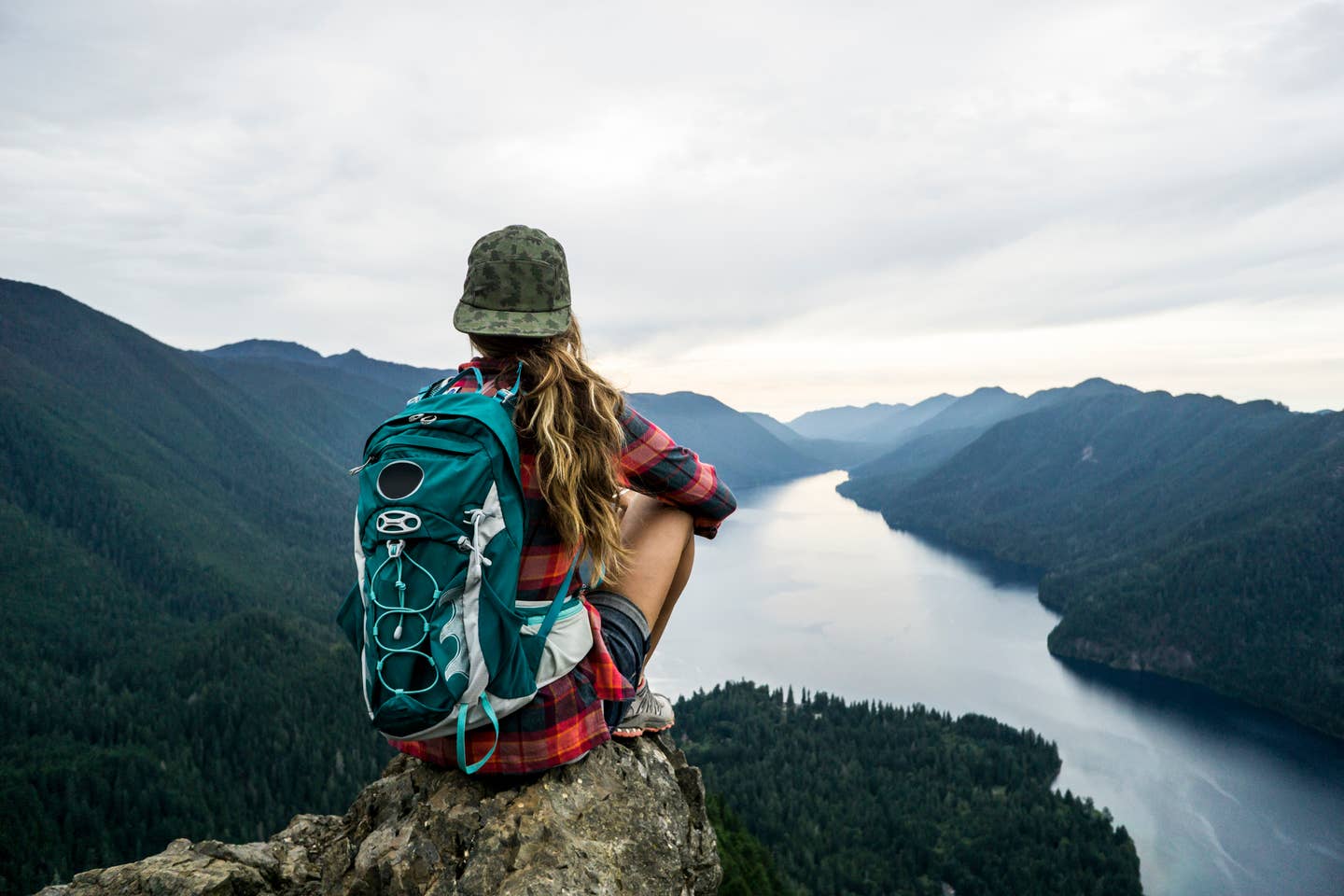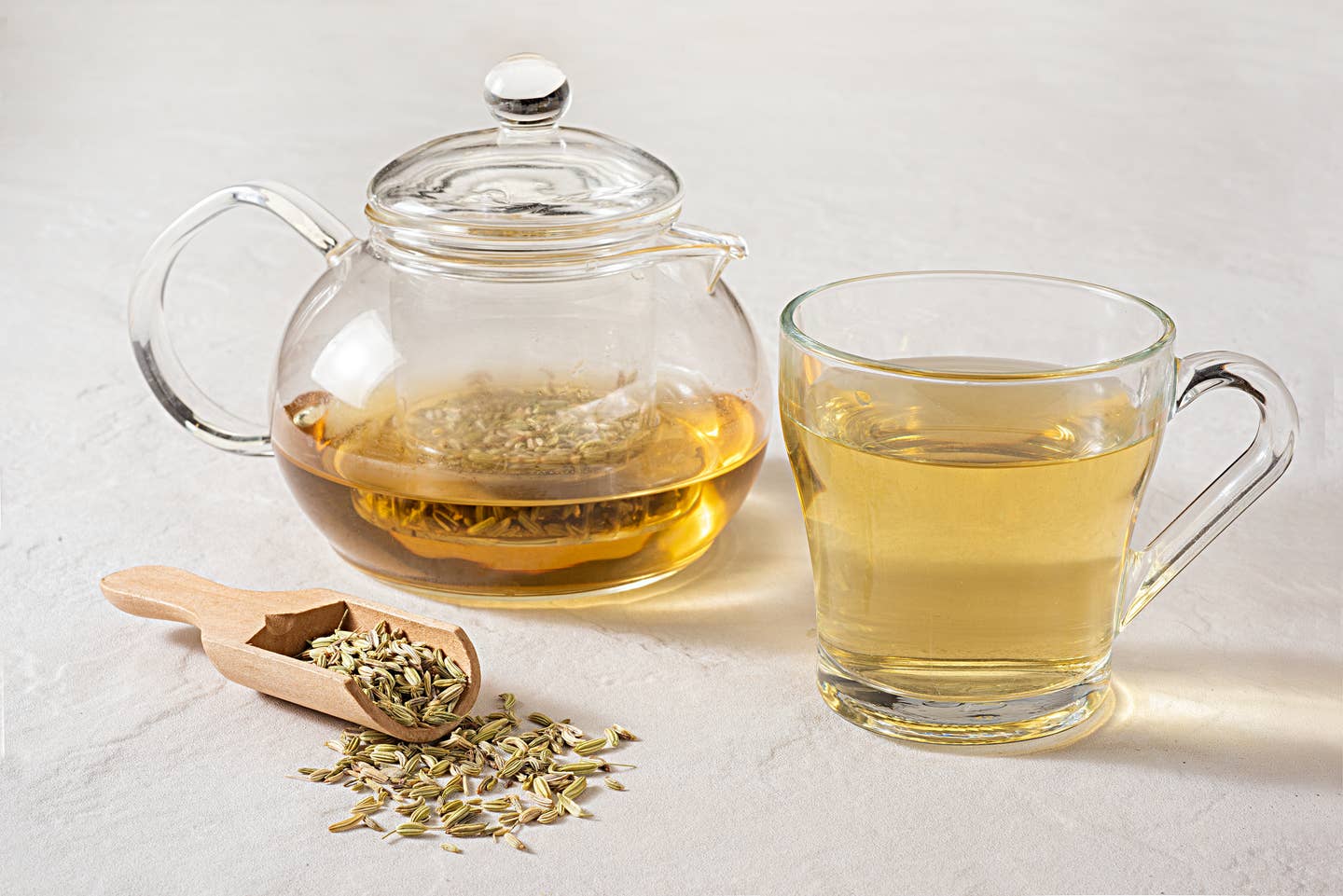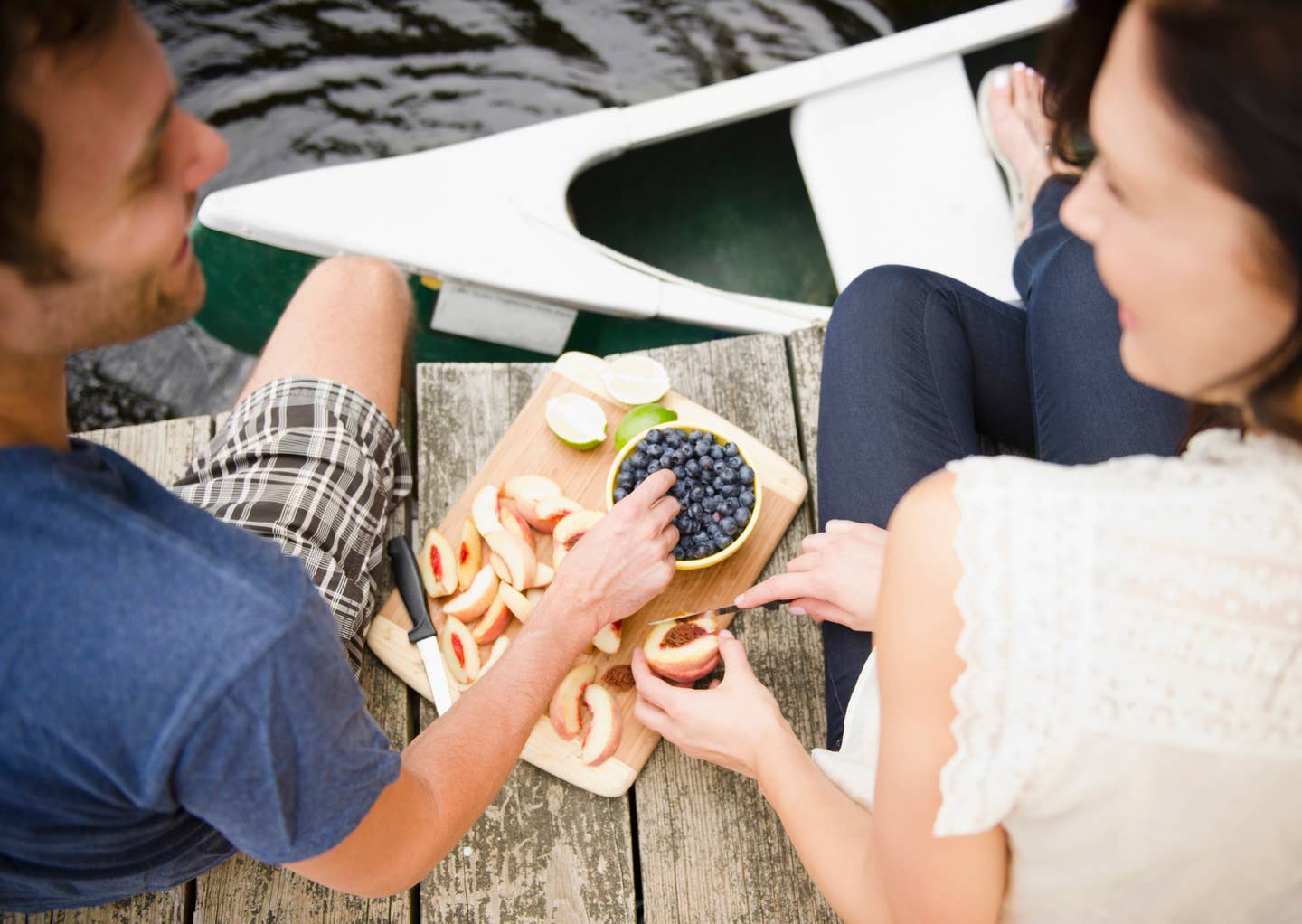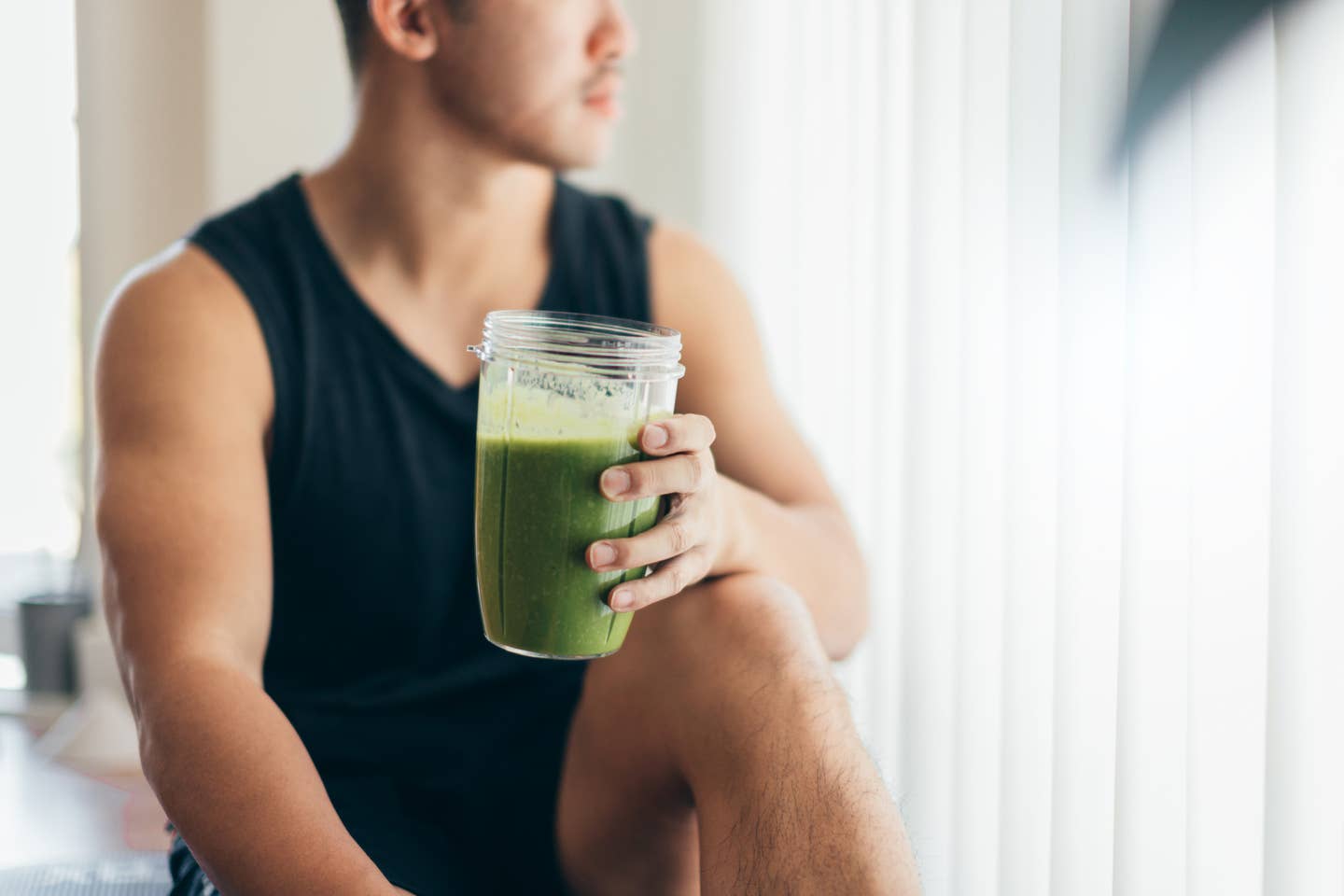
The Best Outdoor Activity for All-Around Fitness and Health? Hiking
This year, nearly 55 million Americans will be hitting the road or flying to get to loved ones for their Thanksgiving holiday. But think of this, which likely you won't hear in the headlines: an even larger number of Americans – 59 million – plan to go hiking during the post-Thanksgiving weekend, by some estimates. Americans have fallen in love with hiking, perhaps because it's the most accessible fitness activity that all can do, and that's a very good thing.
According to USA Hiking, 74 percent of Americans have hiked on a trail in the past year, and 59 million Americans define themselves as "active hikers," a number that is on the rise. The U.S. has more hikers per capita than any other country in the world, according to REI. The sooner you count yourself among them, the better, according to studies that show hiking is the healthiest activity you can do, for the sake of your heart, overall fitness, and longevity.
Is Hiking Good for You?
In case you have to choose between going for a brief jog in the neighborhood or a longer hilly hike the day after feasting, choose the hike, since all in all, hiking is better all-around exercise, requiring you to use more of your body's stabilizing muscles, and is less damaging to your joints over time. Plus, you will very likely be eager to stay out on the hiking trail longer, moving for over an hour, which leads you to burn more calories hiking than 20 minutes of running.
Hiking may just be the most heart-healthy, well-rounded fitness activity on the planet (other than perhaps swimming) according to health experts who are thrilled to see Americans take to the hills. Hiking, long perceived to be a "mellow" activity of communing with nature, has now become elevated to the first position in the rankings of which fitness activity is the all-around healthiest, especially when comparing hiking to running.
Getting Outside Helps Your Mental Health
One of the main benefits of hiking is being outdoors in nature, where you can enjoy the view, and breathe in the magical air that has been proven to fight anxiety and depression and elevate mood. The mere act of being outdoors has been shown in scientific studies to help calm the anxious mind and allow for mood-boosting endorphins to circulate.
In one study of nearly 20,000 participants, researchers found that spending at least 120 minutes a week in nature is associated with good health and better well-being. While it may be tough to accomplish getting out there on a daily basis, taking a nice long hike on a Saturday gets the job done.
Additionally, hiking within close proximity of water (such as by a rolling river, to a waterfall, a beautiful lake, or near the ocean) further adds benefit to our mental health state. Studies have shown that stray negative ions (released by water crashing on rocks or sand, or clouds floating into mountain peaks) when inhaled end up in our bloodstream, where they can bind to positively charged free radicals, damaging agents that cause cellular aging and stress.
The famous finding led to a rare fun headline, "Negative Ions Lead to Positive Vibes." More recent review analyses of over 33 studies have confirmed that walking by water can lower symptoms of depression and anxiety. So hiking and breathing in ion-infused air can be even more beneficial to the stressed-out city dweller who needs a breath of fresh air, or many.
Hiking is simple and requires zero skill other than staying upright, putting one foot in front of the other, and keeping arms pumping to help mobilize the entire body. Added core strength is gained when leaning into the uphill slope, and you need very little special gear (other than stable shoes and layers of warm-wicking clothing that will allow you to cool off as you get heated).
Pretty much anyone who can walk can participate in hiking, but of course, check with your doctor if you have any type of heart or lung condition that might limit your exertion. You can get your heart rate up pretty fast when you're marching uphill, so don't bite off more of a hike or climb than you can handle, and work your way up from gentle inclines to steeper mountain summits.
So why are Americans falling in love with hiking over running (which is losing participants at about the same rate hiking is gaining more enthusiasts)? By some calculations, taking a hike is the very best exercise you can do, even better than a jog, which creates more impact on aging knees, hips, ankles, and joints.
Is Hiking Better Than Running?
There's nothing wrong with doing a turkey trot –– far be it from us to discourage a family 5K over the Thanksgiving weekend. But that will likely take less than half an hour to complete.
Hiking is even better for you than running for burning calories if you figure that you hike for longer than you would have jogged, and if you add to your hike an inclined trail, some uneven terrain that requires you to adjust your balance and require your proprioceptors to engage.
These proprioceptors are the internal balance sensors within the body that tell the muscles to work to stabilize your body in space, so you aren't just moving forward or in one simple motion (as on a spin bike, or elliptical trainer, or running along a smooth flat footpath) but have to constantly adjust to keep the body moving yet upright, and avoid tripping on a sloping rock, or keep your ankle from rolling over on sliding shale or fall on uneven terrain.
This constant adjustment during hiking beats out walking, swimming, biking, and running since in all likelihood you are going to hike for over an hour.
Why is Hiking the Best Exercise?
When runners hear you are going for a hike they can't help but think: "That's lightweight compared to my run." But nothing could be further from the truth. Hiking works more of the body's core muscles, since leaning into the uphill ascent and stabilizing yourself on the way back down, requires you to engage more of your chest, back, abs, and hip flexors.
An efficient runner can move from the waist down with some light pumping of the arms. As you hike you need to engage more muscle groups and even if you're relaxed, your neck, shoulders, back, and arms get recruited to make sure you're not going to topple and that your body is able to compensate for the up and down hiking trails.
The longer you hike, and the quicker you move, the more heart-pumping exertion your hike will require, which, like all cardio exercise can create a stronger heart and over time help to lower your blood pressure, and reduce your risk of heart disease, stroke, high cholesterol, and even some cancers. Since hiking is weight-bearing (but not pounding) it can also help prevent osteoporosis, according to an article by Piedmont Healthcare.
Hiking is easier than running to do without stopping, and if you make it a regular habit, hiking can help you manage or lose weight (because of the intense calories you burn on a challenging trail) and is joint-friendly, reducing the chances of injury. Being outside in the sun also can help your body produce vitamin D, and for people who are taking insulin to treat diabetes, a regular hiking habit has been known to help them lower their need for medication, according to Piedmont.
How Many Calories Are Burned Hiking?
That depends. Are you booking it or going slow? Are you out there for hours or just a brief stint? The number of calories you burn depends on your size and how fast and hard you go when hiking. If you hike at a fast clip and put yourself on a trail with an uphill incline, you will actually burn more calories hiking than even running (so long as you hike for longer than you would have spent running).
Here are the stats, according to the website Betterme.world, which points out that the other variable is that running fast will boost these calorie counts. So let's assume hiking at a fast clip versus running at a medium pace.
For someone who weighs 125 pounds and goes for a 30-minute hike, they can expect to burn about 180 calories which is actually more than if the same person chose to walk or dance. If instead, you went hiking you would burn 223 calories (or more if you weigh more, since a 155-pound person could burn as much as 266 calories.) Stay out there longer, such as for an hour, and the 155-pound person can burn 370 calories, especially if you're moving steadily uphill for that full hour.
Of course, per hour, running burns more calories: A 60-minute run at 5 miles per hour can burn up to 700 calories. The same hour of hiking will burn up to 525 calories, but the X factor is time. More people are able to hike for a full hour than run for a full hour. So if you and your family are setting out to get exercise, plan a hike, since everyone can join.
What Time of Day Should I Hike?
Always set out in the earliest part of the morning. That might mean driving before sun up to the trailhead, then waiting until it's light to start out. The longer the hike (8 hours or so) the more likely you will be out as the afternoon fades into dusk. Don't allow yourself to be caught out in the wilderness after dark unless you have made provisions with a tent, sleeping bag, flint, water purifying pills, cooking gear, food, and other camping essentials. Even a headlamp is a good investment if you think you might get caught out in the dark.
What Should I Bring on a Hike?
There are many things that can come along for a hike with you depending on the duration and distance you are planning to cover. A short checklist includes the following items but if you think you could get caught out after dark, add provisions and bring a light such as a headlamp or powerful light to strap onto your hat to see your way through the darkness.
Depending on how far into the backcountry you're planning to go you may want to add pepper spray or a beacon since mountain lions, bears, and getting injured or lost can make for a great story but ruin a fun walk in the woods.
If you're just going for a short day hike, consider taking all or some of these items.
- Water in a hydration system
- Hiking shoes or boots
- Loose-fitting clothing that allows layering
- Hat or Visor (bandana for neck)
- Sunglasses
- Gloves
- Dry Socks
- Bandaids
- Map
- Energy Bars
- Sun Screen
- Day Pack
- Dry Base Layer
- Walking Poles
- Headlamp
Bring plenty of water to drink since you may not realize how much fluid you're losing if the air is cool and dry and your sweat doesn't accumulate in your skin the way it would on a jog –– you still need to rehydrate all the way up and down to keep a clear head and your muscles working fluidly.
The general rule is that you will need one half-liter of water per hour of moderate activity and more if it gets hot or you are in the arid desert or mountain air. That's why a hydration system with about 2 to 3 liters is a good idea since you may be carrying enough water for yourself and one or two companions.
Always tell someone who is not coming on the hike where you are going and what time you are setting out, as well as what time you expect to be home. If they don't hear from you by a certain hour, they will know to send out a search party since you may have gotten in trouble or hurt. Cell phones only work if you can get a signal. Use old-fashioned maps and backup methods of communication to be safe. If you're going deep into the wilderness, bring pepper spray (to ward off bears) and a flare or two (to signal for help in case it comes to needing it).
How Long Should I Hike for?
Plan on a modest hike for your first foray, such as half an hour out and half an hour back. Know that coming downhill can be tough on knees and muscles unaccustomed to stabilizing your weight as you descend, so don't rush the descent. Better yet, bring hiking poles to steady you in case the ground is slippery or the rocks and shales give way as you step.
Where Should I Hike?
The National Park Service estimates there are more than 200,000 miles of hiking trails in the U.S. and there are at least 21,000 miles of long trains. The longest single hiking trail starts at Zuma Beach State Park in California and goes north to Point Reyes National Seashore in Marin County a distance of nearly 600 miles.
There are sites like AllTrails that help you locate a hike near you. Otherwise, check your local resources since many city guides include the best places to hike near you.
As a beginner hiker, you will want a hiking trail of about 3 to 5 miles long, with varying terrain, to start out, and look for ones that are well-marked, safe, and free of predatory wildlife such as bears or mountain lions.
Gradually build up to longer and steeper hikes, and add a destination like a summit or a lookout so you feel accomplished by getting to the top of your waterfall view. It's not just the minutes on the trail but the journey that matters. Allow your mind to wander and get into a state of "flow" where your movements are automatic and your brain gets a meditative time out from the usual stresses of daily life.
Bottom Line: Hiking Is the Best All-Around Outdoor Fitness Activity You Can Do
Hiking is gaining in popularity because it is accessible, inspiring and one of the best fitness activities you can do to burn calories and build lifelong fitness and health. Before you start your hiking journey, make sure your doctor gives you the green light and plans to start out on easy hikes, and gradually build up to steeper and longer trails. Equip yourself with the proper hiking shoes, a hydration carrying system, and perhaps a pair of lightweight walking poles.
For more healthy lifestyle tips, visit The Beet's Health & Nutrition articles.
More From The Beet






